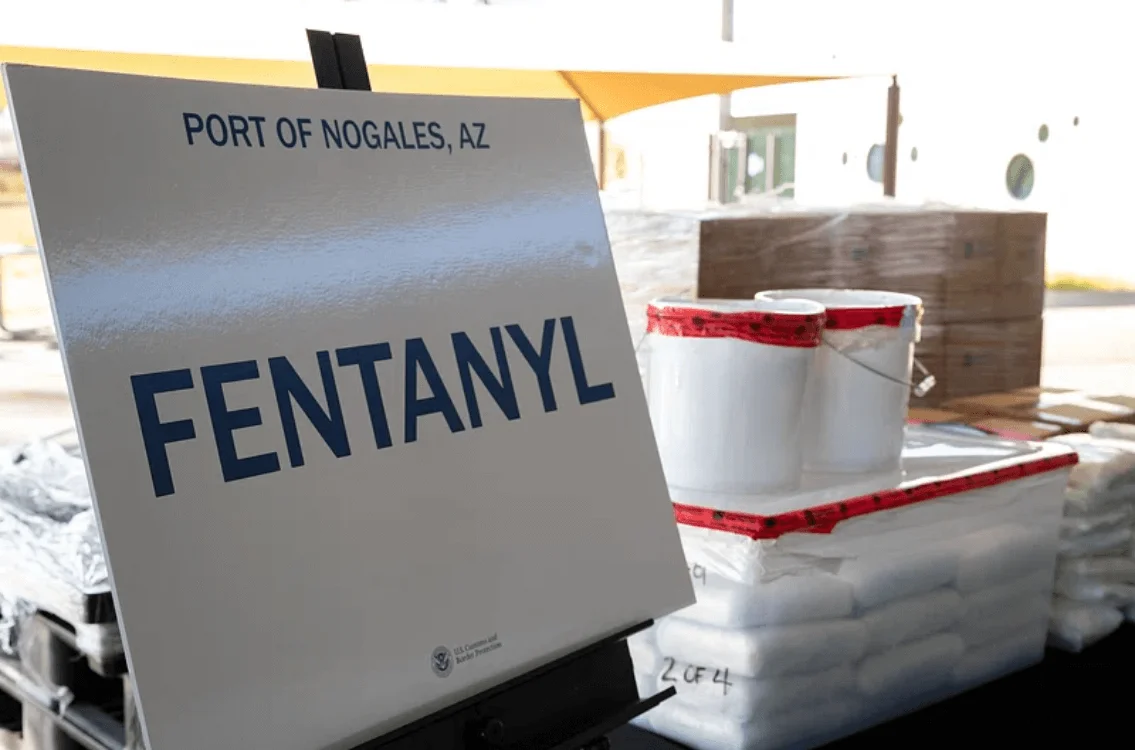
Understanding Fentanyl Overdose: Signs, Risks, and Lifesaving Interventions
In recent years, the opioid epidemic has cast a long, dark shadow across communities, with fentanyl emerging as a particularly menacing threat.
This synthetic opioid, known for its extreme potency, has alarmingly escalated the rate of overdoses, often catching users and their loved ones off guard. In this introduction, we delve into the critical aspects of fentanyl – its nature, its growing prevalence in opioid-related incidents, and why understanding its potency is vital for prevention and response.
Fentanyl, initially developed for severe pain management in medical settings, has found its way onto the streets, often disguised in other substances. Its potency, estimated to be 50 to 100 times stronger than morphine, poses a significant risk even in minute quantities.
This alarming strength not only makes it deadly but also contributes to the spike in overdose cases, as many users are unaware of its presence in the drugs they consume.
Understanding fentanyl’s role in the opioid crisis is not just about recognizing its potency; it’s about acknowledging the silent, swift nature of its impact. As we navigate this crisis, knowledge becomes our first line of defense.
Recognizing the signs of fentanyl overdose and knowing the immediate steps to take can save lives. This article aims to empower readers with essential information, fostering awareness and preparedness in this growing challenge.
What is Fentanyl?
Fentanyl, a synthetic opioid, has become a focal point in discussions about the opioid crisis due to its extreme potency and the rising number of related overdoses. Understanding fentanyl requires a clear distinction between its pharmaceutical applications and its illicit production and use.
Pharmaceutical Fentanyl: A Potent Pain Reliever
In medical settings, fentanyl is a powerful pain medication typically used to treat severe pain, especially post-surgery. It’s also prescribed for chronic pain patients who have built a tolerance to other opioids. Fentanyl’s effectiveness in pain management is due to its high potency. This potency, while beneficial in controlled medical environments, also makes it a target for abuse.
Illicitly Manufactured Fentanyl: A Dangerous Street Drug
The fentanyl that is contributing to the surge in overdoses is primarily illicitly manufactured. This illegally made fentanyl is often mixed with other drugs like heroin, cocaine, or methamphetamine, sometimes without the user’s knowledge.
This practice significantly increases the risk of overdose, as fentanyl’s potency can overwhelm even seasoned drug users. Illegally made fentanyl is often distributed in various forms, including powders, pills made to look like other prescription opioids and even liquid forms.
Fentanyl’s Impact on the Brain and Body
Fentanyl acts by binding to opioid receptors in the brain, which control pain and emotions. This binding leads to effects such as extreme happiness, sedation, confusion, and, in some cases, dangerous respiratory depression. The risk of addiction is high due to the intense euphoria and physical dependence it can create.

The Dangers of Fentanyl Addiction
Fentanyl addiction is a serious concern, with withdrawal symptoms that can be severe and challenging to manage. Treatment for fentanyl addiction often involves a combination of medication-assisted therapy and behavioral interventions aimed at managing withdrawal symptoms and addressing the psychological aspects of addiction.
For more detailed information on fentanyl, its effects, and treatment options, you can visit the National Institute on Drug Abuse’s Fentanyl DrugFacts.
The Rise of Fentanyl Overdoses
The opioid crisis has taken a dangerous turn with the rise of fentanyl overdoses, a trend that reflects the growing presence of this potent synthetic opioid in the drug market. The statistics are alarming and paint a grim picture of the escalating danger posed by fentanyl.
The Alarming Statistics
According to the Centers for Disease Control and Prevention (CDC), the rate of overdose deaths involving synthetic opioids, primarily fentanyl, has seen a significant increase.
In 2021 alone, the United States witnessed over 106,699 drug overdose deaths, with a substantial portion involving opioids like fentanyl. This marked a 14% increase from the previous year, underscoring the urgency of addressing this crisis. Nearly 88% of opioid-involved overdose deaths were linked to synthetic opioids, highlighting fentanyl’s deadly impact.
Fentanyl Mixed with Other Drugs: A Lethal Combination
One of the most dangerous aspects of illicitly manufactured fentanyl is its frequent combination with other drugs. Often, fentanyl is mixed into heroin, cocaine, or methamphetamine, sometimes without the knowledge of the user.
This practice not only increases the potency of these drugs but also significantly raises the risk of overdose. The amount of fentanyl required to cause an overdose is minuscule, making it a hidden but deadly component in many substance abuse cases.
The rise in fentanyl overdoses is a call to action for health and human services, as well as drug enforcement agencies, to intensify their efforts in combating this crisis. It’s crucial for individuals, families, and communities to be aware of the risks associated with fentanyl and to take proactive steps to prevent its devastating consequences.
Recognizing the Signs of Fentanyl Overdose
In the battle against the opioid crisis, one of the most crucial skills is the ability to recognize the signs of a fentanyl overdose. Fentanyl, due to its extreme potency, can cause life-threatening symptoms rapidly, making timely identification and response vital.
Understanding these signs is not only essential for those struggling with substance use disorder but also for their loved ones, healthcare providers, and the community at large.
Key Symptoms of Fentanyl Overdose
- Respiratory Distress: One of the most alarming signs of a fentanyl overdose is difficulty breathing. This can manifest as slowed, shallow, or even stopped breathing.
- Altered Mental Status: The person who is overdosing may experience confusion, drowsiness, or an inability to stay awake, indicating the drug’s impact on the central nervous system.
- Pinpoint Pupils: Constricted, or pinpoint, pupils are a classic sign of opioid use and become more pronounced during an overdose.
- Blue-tinged Lips or Nails: Due to the lack of oxygen, a person experiencing a fentanyl overdose may have blue or purplish lips and nails.
- Limp Body: A noticeable lack of muscle tone or a limp body can be a sign of severe opioid intoxication.
- Gurgling Sounds: Sometimes referred to as a “death rattle,” these sounds indicate a severe obstruction in the airway.
- Loss of Consciousness: Unresponsiveness or inability to wake up is a critical sign that requires immediate medical attention.

The Urgency of Recognizing Overdose Signs
Identifying these symptoms promptly can mean the difference between life and death. Fentanyl overdoses can rapidly progress to life-threatening conditions, particularly respiratory failure.
It’s crucial for anyone who suspects an overdose to act immediately, calling emergency services and administering naloxone if available. Naloxone is an opioid antagonist that can temporarily reverse the effects of an opioid overdose, buying crucial time until medical help arrives.
Understanding and recognizing the signs of a fentanyl overdose is a key step in addressing the opioid crisis. It empowers individuals and communities to respond effectively, potentially saving lives and paving the way for recovery and treatment.
Causes and Risk Factors of Fentanyl Overdose
Understanding the causes and risk factors associated with fentanyl overdoses is crucial in preventing these tragic incidents. Fentanyl overdoses don’t just happen in a vacuum; they are often the result of a complex interplay of factors related to drug abuse, substance abuse, mental health issues, and the unique properties of fentanyl itself.
How Fentanyl Overdoses Occur
- Potency and Dosage Issues: Fentanyl’s extreme potency means that a minimal amount can lead to an overdose. This makes it difficult for drug users to gauge a safe dose, especially when fentanyl is illicitly manufactured, and its concentration in a drug mix is unknown.
- Unknowingly Consuming Fentanyl: Many users are unaware that the drugs they consume contain fentanyl. It’s nearly impossible to tell if drugs like heroin, cocaine, or methamphetamine are laced with fentanyl, leading to unintentional overdoses.
Risk Factors for Fentanyl Overdose
- Mixing Substances: Combining fentanyl with other substances, especially depressants like alcohol or benzodiazepines, can amplify its effects, increasing the risk of respiratory failure and overdose.
- Lack of Tolerance: Individuals with opioid use disorder who have not used opioids for a period (due to recovery efforts or lack of access) may lose their tolerance. If they relapse and use the same amount of fentanyl as before, the risk of overdose is significantly higher.
- Mental Health and Substance Abuse: People struggling with mental health issues or other substance abuse problems may be more susceptible to fentanyl misuse and overdose. This is particularly true for those who use drugs to self-medicate or escape from psychological distress.
The Role of Substance Abuse and Mental Health Services
Addressing the causes and risk factors of fentanyl overdoses requires a comprehensive approach that includes substance abuse and mental health services.
These services play a critical role in providing education, treatment, and support to those at risk of fentanyl misuse and overdose. By understanding the underlying causes and risk factors, individuals, healthcare providers, and communities can work together to prevent overdoses and support recovery.
Immediate Actions in Case of Overdose
When faced with a suspected fentanyl overdose, immediate and decisive action can save lives. Recognizing the signs of an overdose is just the first step; knowing what to do next is critical.
Here’s a step-by-step guide on how to respond to a fentanyl overdose, emphasizing the importance of quick action and the use of naloxone, a life-saving medication.
Step-by-Step Guide for Responding to a Fentanyl Overdose
- Call 911 Immediately: The first and most crucial step is to call emergency services. Provide clear information about the situation and the person’s condition.
- Check for Responsiveness: If the person is not responsive, try to wake them up by shouting their name or gently shaking their shoulder.
- Administer Naloxone: If you have naloxone available, administer it immediately. Naloxone is available as a nasal spray or injectable form and can reverse an overdose of fentanyl and other opioids.
- Perform Rescue Breathing or CPR: If the person is not breathing or breathing shallow, begin rescue breathing or CPR if you are trained.
- Stay with the Person: Remain with the person until emergency services arrive. If the person wakes up, try to keep them calm and still.
- Follow-Up Doses of Naloxone: In some cases, it may require multiple doses of naloxone to reverse an overdose, especially with potent opioids like fentanyl. Be prepared to administer additional doses if the person doesn’t respond to the first dose.
The Role of Naloxone in Overdose Situations
Naloxone is a medicine specifically designed to reverse opioid overdose rapidly. It works by binding to opioid receptors and blocking the effects of opioids.
In most states, naloxone can be obtained without a prescription, making it accessible for individuals who are at risk of an opioid overdose or know someone who is. It’s important to note that naloxone is a temporary measure; medical attention is still crucial even after naloxone is given.
For detailed instructions on how to administer naloxone, including the use of nasal sprays and injectable forms, visit the American Medical Association’s guide on How to Administer Naloxone.

Treatment for Fentanyl Addiction
Fentanyl addiction, a severe and often life-threatening condition, requires comprehensive and long-term treatment approaches. At Resilient Recovery Center, located in Lancaster, California, we specialize in providing personalized and effective treatment plans for those struggling with fentanyl addiction.
Our approach combines medication-assisted therapy with behavioral therapies, aiming to help individuals overcome addiction and rebuild their lives.
Resilient Recovery Center: A Path to Healing
At Resilient Recovery Center, we understand that each journey to recovery is unique. Our treatment programs are designed to address the individual needs of our clients, offering a supportive and nurturing environment that fosters healing and growth. Our team of experienced professionals is dedicated to providing the highest level of care, ensuring each client receives the support they need to achieve lasting recovery.
Medication-Assisted Therapy: A Key Component
Medication-assisted therapy (MAT) is a critical element of our treatment program. MAT involves the use of FDA-approved medications, such as buprenorphine, methadone, or naltrexone, to manage withdrawal symptoms and reduce cravings.
These medications, combined with counseling and behavioral therapies, provide a holistic approach to treating fentanyl addiction. MAT has been shown to improve patient survival, increase retention in treatment, and reduce illicit opioid use.
Behavioral Therapies: Changing Attitudes and Behaviors
Behavioral therapies are another cornerstone of our treatment approach. These therapies help people modify their attitudes and behaviors related to drug use, enhancing their life skills to handle stressful situations and environmental cues that may trigger intense cravings.
Our therapies for addiction to opioids include Cognitive Behavioral Therapy (CBT), Dialectical Behavior Therapy (DBT), and other evidence-based practices. These therapies are designed to help clients develop coping strategies, improve their emotional regulation, and ultimately achieve and maintain sobriety.
At Resilient Recovery Center, we are committed to providing comprehensive and compassionate care to those struggling with fentanyl addiction. We aim to empower our clients to lead healthy, fulfilling lives free from addiction.

Prevention and Education
Preventing fentanyl overdoses requires a multifaceted approach that includes public education, awareness, and access to treatment and referral services. Understanding the risks associated with fentanyl use and knowing how to respond to overdoses are critical components of this strategy.
At Resilient Recovery Center, we emphasize the importance of these preventive measures in our community outreach and education programs.
Public Education and Awareness
- Raising Awareness: Educating the public about the dangers of fentanyl, its potency, and the risk of overdose is crucial. This includes understanding how fentanyl is often mixed with other drugs and the importance of avoiding illicit drug use.
- Promoting Treatment Options: Making people aware of the available treatment and referral services is essential. This includes information on how to access help for substance abuse and mental health issues.
- Community Involvement: Engaging with local communities to spread awareness and provide education on fentanyl and its risks. This can be done through workshops, seminars, and collaboration with local health and service agencies.
The Importance of Understanding Risks
- Knowledge is Power: Understanding the risks associated with fentanyl use can deter individuals from experimenting with or misusing this dangerous opioid.
- Preventing Overdoses: By educating individuals, especially those at risk of opioid use disorder, about the signs of an overdose and the immediate actions to take, we can save lives.
Resources for Help and Information
- SAMHSA’s National Helpline: The Substance Abuse and Mental Health Services Administration (SAMHSA) offers a free, confidential, 24/7, 365-day-a-year treatment referral and information service for individuals and families facing mental and/or substance use disorders. For more information, visit SAMHSA’s National Helpline.
- Drug Enforcement Administration (DEA): The DEA provides resources and information on drug abuse, prevention, and treatment.
Prevention and education are critical in the fight against fentanyl overdoses. By spreading awareness and providing resources, we can help prevent these tragedies and support those in need.
Conclusion
The escalating crisis of fentanyl overdoses underscores the critical need for awareness, education, and prompt action. Fentanyl, with its potent and often unpredictable effects, poses a significant threat to individuals and communities alike.
Understanding the signs of an overdose, knowing the immediate steps to take, and being aware of the treatment options available are essential in combating this crisis.
Emphasizing the Need for Awareness and Action
- Recognizing the Signs: Education on recognizing the signs of a fentanyl overdose can save lives. Quick identification and response are crucial in these emergencies.
- Immediate Response: Knowing how to administer naloxone and perform life-saving measures can make a critical difference in the outcome of an overdose.
- Seeking Treatment: For those struggling with fentanyl or other opioid addictions, seeking professional help is a vital step toward recovery.
Resilient Recovery Center: Your Partner in Recovery
At Resilient Recovery Center, we are committed to providing comprehensive care and support for individuals battling addiction.
Our approach combines medication-assisted therapy with behavioral therapies tailored to meet the unique needs of each client. We believe in empowering our clients to achieve lasting recovery and a return to a life of health and fulfillment.
- Comprehensive Treatment Programs: Our center offers a range of treatment options, including medication-assisted therapy and behavioral counseling, to address the complexities of fentanyl addiction.
- Experienced and Compassionate Care: Our team of professionals is dedicated to providing the highest level of care in a supportive and nurturing environment.
- Community Outreach and Education: We actively engage in community education and awareness programs to help prevent fentanyl overdoses and promote healthy, drug-free lifestyles.

Take the First Step Toward Recovery
If you or a loved one is struggling with substance abuse, don’t wait to seek help. Contact Resilient Recovery Center today to learn more about our treatment programs and how we can support you on your journey to recovery. Visit our website at Resilient Recovery Center or call us to take the first step towards a healthier, happier life.
Together, we can face the challenge of fentanyl addiction and work towards a safer, healthier community.
